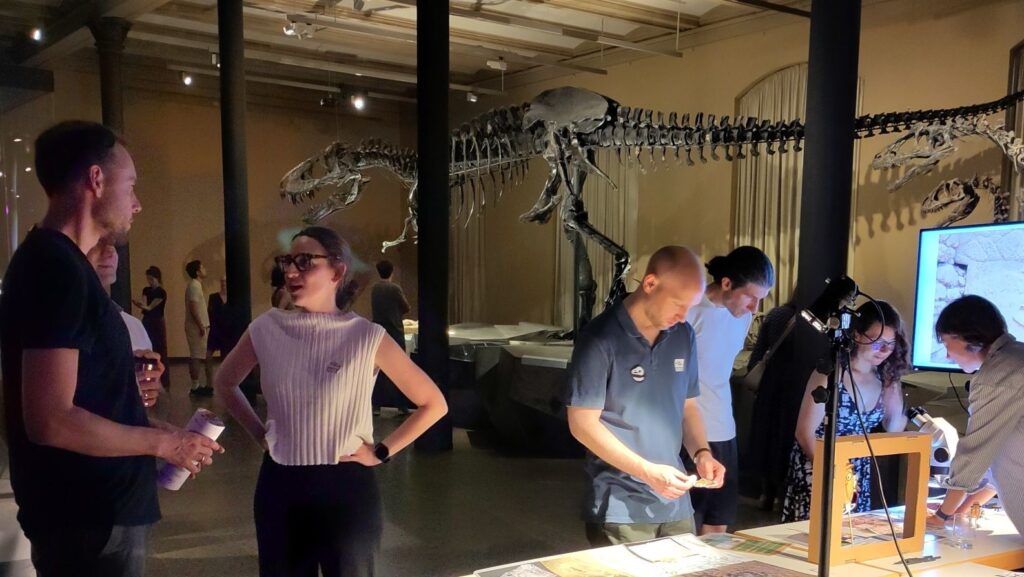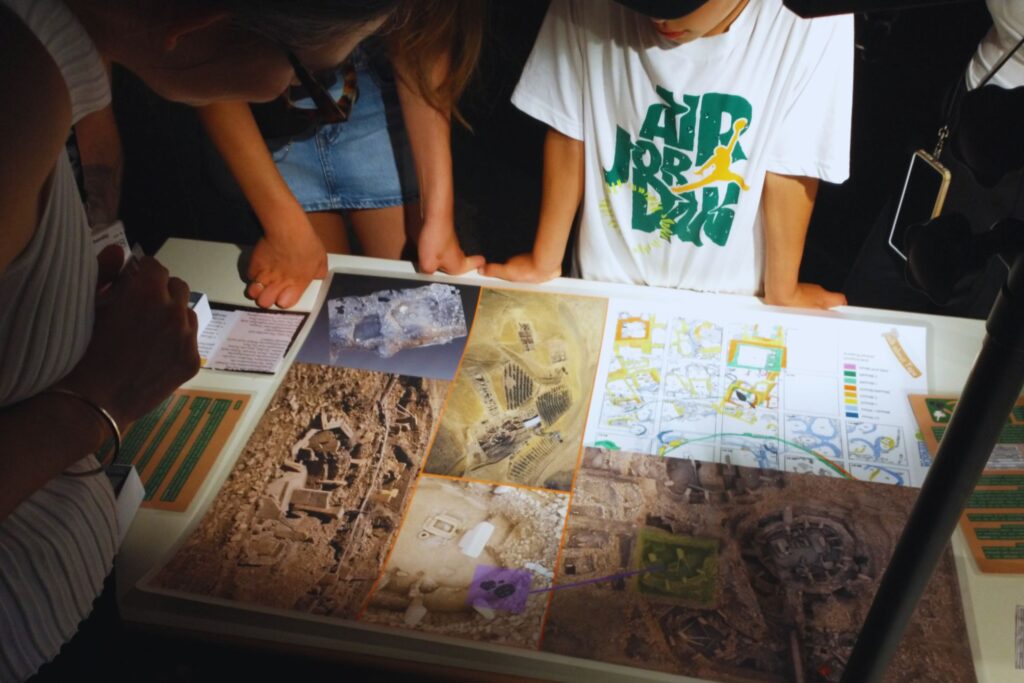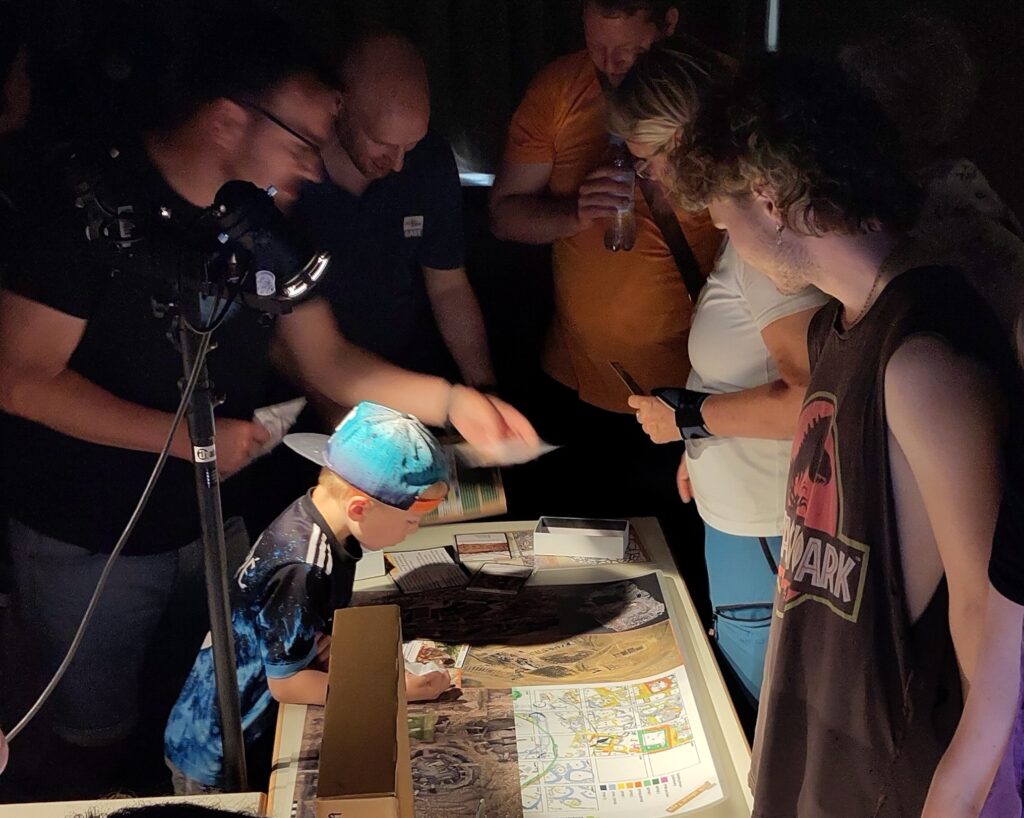The communication of knowledge requires different forms for different formats – so far, so good. For the Research Data Day, for example, we developed the Data Clues. This was a format where we caught the interest of passing students and lecturers with a chance glance.
The Long Night of Science had a different setting and audience. A summer evening in darkened museum atmosphere amidst dinosaur skeletons. Right next to the famous T-Rex Tristan: a blessing and a curse at the same time. Months before the event, we asked ourselves: how can we attract the attention of the general public with our topics without immediate defeat in the duel against the king of dinosaurs?

We initially decided on a quiz – but every second exhibition stand at the Long Night does that. So why should guests stay with us given the wide range of activities on offer and the limited duration of the Long Night?
What is our USP (unique selling point): the Göbekli Tepe research project, whose research data we are allowed to use for our case studies in WiNoDa. So we started by brainstorming and sifting through our material… it turned out that plan section maps and aerial photographs from archaeological sites could actually work perfectly as game boards!
The result of collaborative work with a wide range of expertise from the team: a visually appealing, cooperative quiz and search game for all age groups that allows to freely allocate as much time as you want and the open goal of finding out what the people of Göbekli Tepe did – by solving exploratory questions together. Only when all the quiz cards have been solved does an overall picture emerge. But even with a partial result or leaving mid-game, there already is the impact of success on the player.

…weeks later… printed out in two languages in a large and tactile format – cards laminated, corners safely rounded – game board commissioned in A1 format – Talk about Tepe is born. Fingers crossed for the big evening…
And I can tell you that we did very well against Tristan – actually much better than expected. There are now a few hundred more people who at least have a profound knowledge of the place and have hopefully anchored their knowledge and research methods through joint questions, discussions and a cheerful atmosphere.

One lesson: Dare to explore new ways of communicating knowledge and science, but keep your audience in focus. Find the time and energy for this – a happy audience should be worth it – even if such formats are not explicitly anchored in the work packages, we should live up to our expectations and give as much back to the public as we would hope for as guests ourselves.
And what will happen to the game now, what is its further use? That we will explore in a future article.
Project manager in archaeology and museology with a focus on collection management. Everyone in the team communicates externally, but I support WiNoDa with a clear social media focus!
